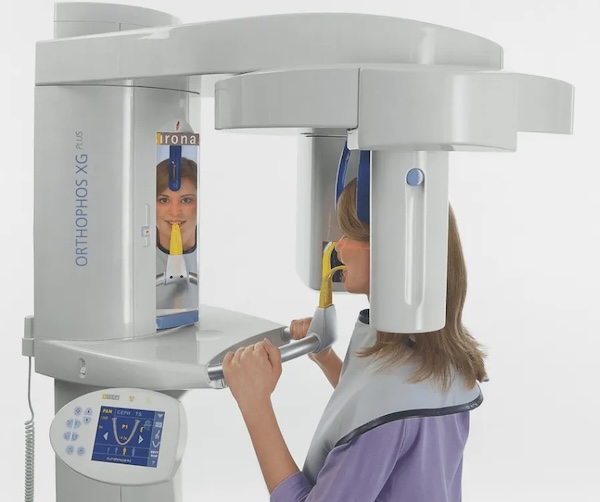What is a dental x-ray?
A dental x-ray allows us to visualize areas of the tooth that cannot be seen visually, such as the jaw bone, the root of the tooth, or in between the teeth where cavities might develop.
What are the different types of x-rays?
There are a few different types of x-rays, including bitewing x-rays, periapical x-rays, panoramic x-rays, and 3D x-rays or comb beam CT. Bitewing x-rays show cavities between the teeth, periapical x-rays show the whole root of the tooth, panoramic x-rays show the whole jaw bone and sometimes carotid calcifications, and 3D x-rays show the teeth in slices in different planes.
Are x-rays typically covered by insurance?
Yes, typically x-rays are covered by insurance. However, a 3D x-ray is one of the few that's not covered by insurance on occasion, though some carriers are beginning to cover it.
What does a 3D x-ray show?
A 3D x-ray shows the teeth in slices in different planes, which allows for a more detailed view of what's going on inside the mouth. This type of x-ray can reveal the nerve's path through the tooth, issues in the sinus, potential abscesses or growths, and is the standard for dental implants. It also shows the airway, adenoids, tonsil stones, carotid body calcifications, the sinus, the teeth, the roots, the jawbone, and any pathology that might be happening, including salivary stones.
What are the concerns about x-rays?
People are often concerned about the radiation exposure from x-rays. However, the dose or exposure from dental x-rays is so minimal now, it's almost immeasurable. A full set of x-rays would be similar exposure in terms of carcinogenic potential of spending a full day in the sun in the summer or a flight across the United States.
Are x-rays included as part of an exam or diagnosis?
Yes, x-rays are always included as part of an exam or diagnosis. Depending on what is being looked at, different types of x-rays may be requested. They are the standard of care for dental treatment and are typically covered by insurance.
How can I schedule an exam or consultation?
To schedule an exam or consultation, you can call our office at (703) 451-4500.

CBCT (Cone Beam CT) Scan or a 3-D X-ray is a revolutionary technology that has emerged in the last 10 years that allows Dr. Dulac to see the teeth and jaw bones in 3D as they truly exist in your mouth rather than simply compressed into one plane as a traditional 2-D X-ray would.
This technology is the standard of care for implant placement.
This technology also allows Dr. Dulac to do guided implant surgery. Dr. Dulac is able to merge a CEREC scan of your teeth with the 3D X-ray. This merger allows Dr. Dulac to plan where your implant will be placed, and then fabricate a guide for surgery that ensures the implant is placed in the ideal location.
In addition to being the standard of care for implants, this diagnostic tool is also great for improving root canal outcomes, and assessing a broad variety of pathology previously not possible to assess with traditional 2D X-rays.
If your dentist does not have a 3D X-ray machine, Dr. Dulac accepts referrals from other dentists to take the scan in our office. The scan can be taken in as little as 14 seconds. We will then provide you or the referring dentist with a copy of the 3D X-ray for your dentist to read and review.


